20 photos of finds that every war digger will be happy about (Photo+, finds are burning!)
The season is in full swing, which means it's time to post a little motivation for lazy pink butts. Yes, guys, it's time to get up from behind the sofa and go digging, while you're sitting here – someone is picking up your finds! However, there is a certain category of diggers who do not dig for war for one reason or another, but with these photos we will say hello to those diggers whose legs shake at the sight of a GP, and who will never find such finds. Let's go!
Weapon
Содержание статьи:
One of the most common finds at combat sites is weapons. It climbs in poorly preserved soil, and in more or less good water bodies – lakes, rivers, swamps. Let’s not forget that previously they could simply collect weapons from the fields that were lying on the surface and throw them into a pond. You can get it with a search magnet or an underwater search device (turn off the discriminant; working with discriminant underwater is a sign of a beginner).
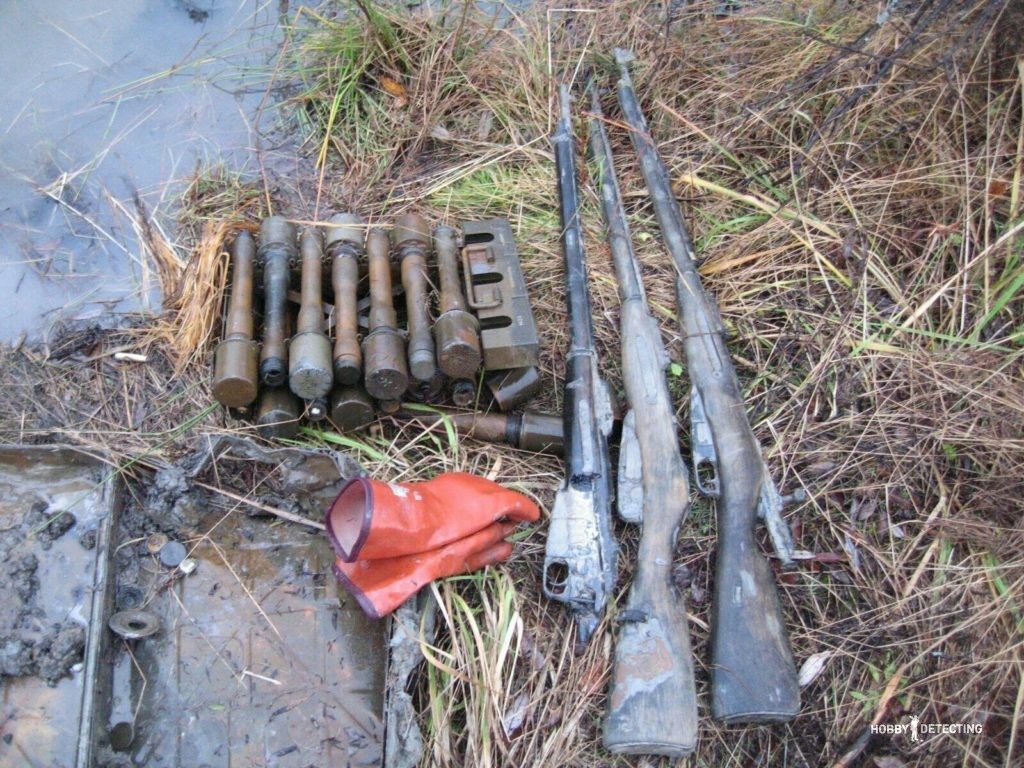
For example, Mosin rifles in excellent condition (can be converted for MMG) and German grenades in the original box are also excellent preparations for MMG.

And this photo is more from the distant 80s and 90s. Then there were no special instruments, except for the once military ones and those units that were brought “from over the hill.” Beautiful samples of a mortar and two PPDs are simply pleasing to the eye! 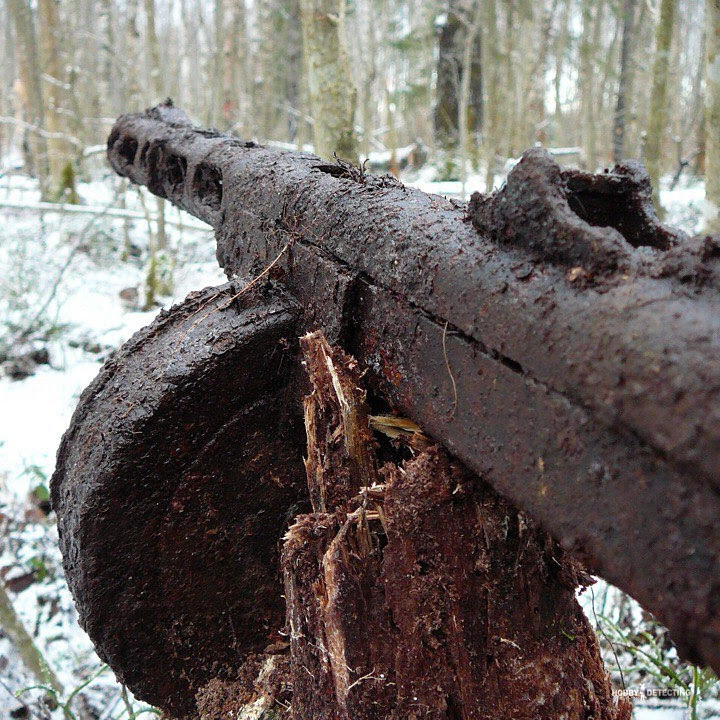
In general, the PPSh is in good condition, definitely beautiful and interesting!

It happens that a trunk grows into a tree, I once saw a German Mauser 98K carbine in a felled tree, and here we have another handsome PPSh!
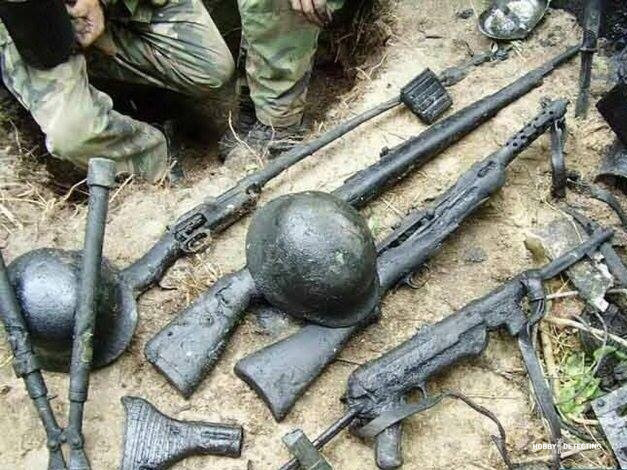
Since two sides took part in the war, German small arms are also found everywhere with Soviet small arms, but less often. And in good preservation, they are absolutely rarities! Beautiful MMGs that can cost thousands and thousands of euros (still walking through fields looking for gold coins?).
Awards
The second category of finds that you want to find are rewards. They rarely lie separately in the ground, although cases do occur; most often they are found together with the owners, which is sad – some careless colleagues (who don’t even bury holes) can take the award and leave the fighter, which makes it impossible to identify the fighter and find out his name, pass it on to family and so on. It’s okay, karma exists in the world and such people will receive it. But, nevertheless, rewards are rare, but come across on the surface or while digging in the dugout/cell.

Most likely a post-war loss, judging by the medal.
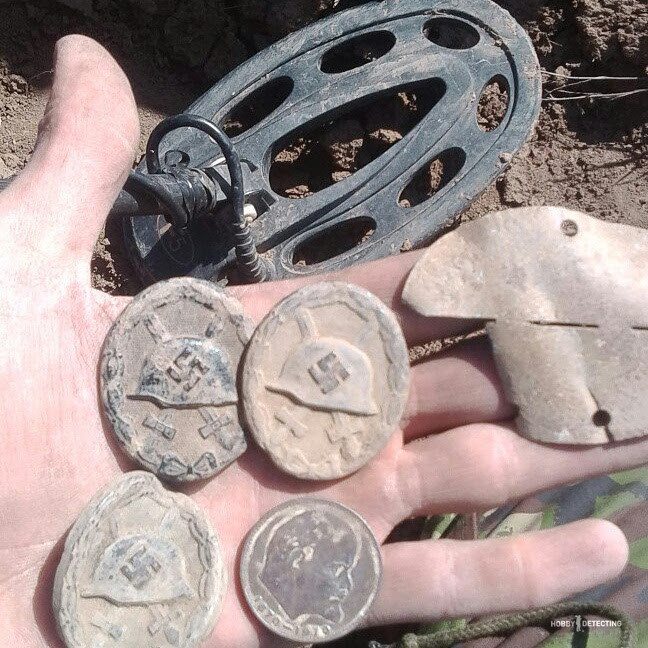
Broken personal badge of a Wehrmacht soldier and signs for wounds. Amusing 1 USSR ruble, anniversary. Did you pick it up from the same pancake, or what?)

Digging for “Edelweiss” is always pleasant and fun!
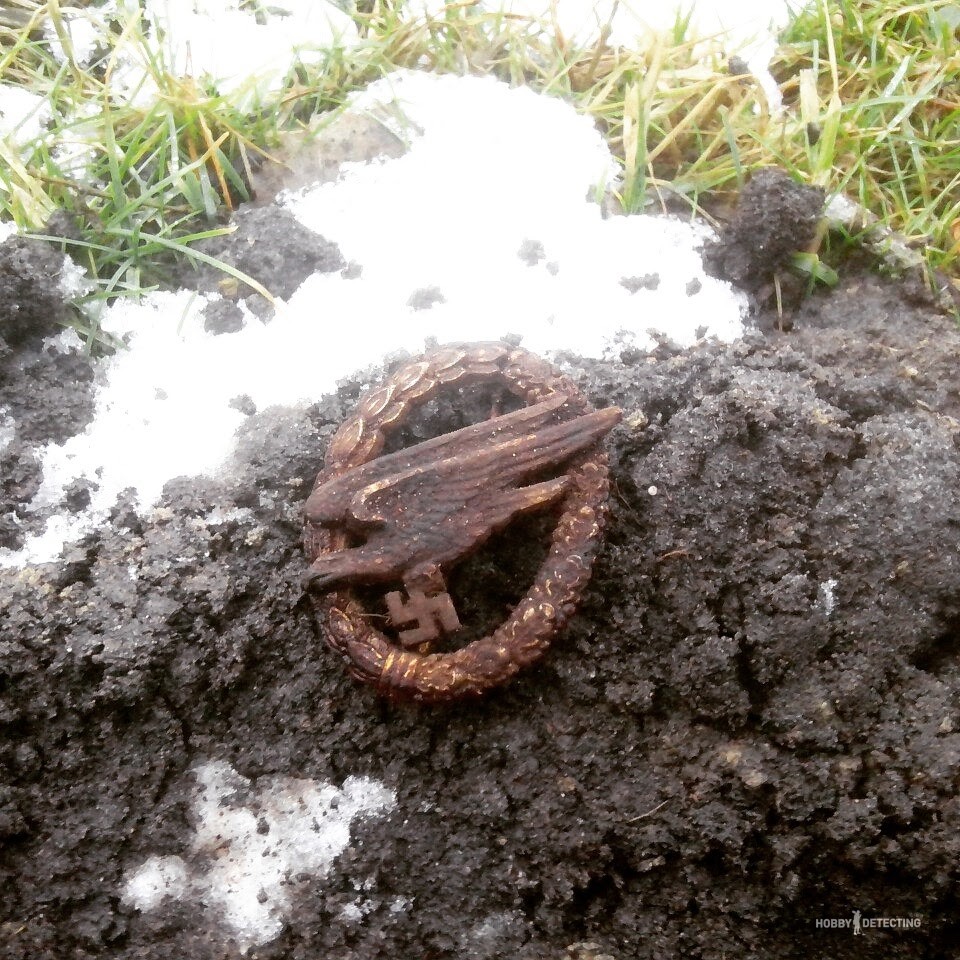 Luftwaffe Paratrooper Badge. It’s an excellent find and is well preserved, but if it still has a bolt on the other side, then such a find is worthless!
Luftwaffe Paratrooper Badge. It’s an excellent find and is well preserved, but if it still has a bolt on the other side, then such a find is worthless!
Rings
Another category of finds that I personally like. Souvenir rings, alas, for the most part, are also included with the owner. If there are initials or any other information, they will help identify the fighter and there will be one less “nameless” in this world!
 For example, one comrade has an interesting collection, it’s beautifully packaged and looks gorgeous!
For example, one comrade has an interesting collection, it’s beautifully packaged and looks gorgeous!
Helmets
Helmets, also known as “caps,” are a fairly common find at military base sites. Many experienced comrades, if the cason is not of interest, leave it right at the place of discovery or hang it on the nearest tree (bough) or bush. Subsequently, it is picked up and carried away by less fortunate and experienced diggers, I don’t know why, but “so that it stays on the shelf.” Many of us have metal waste disease, don’t you agree? 🙂
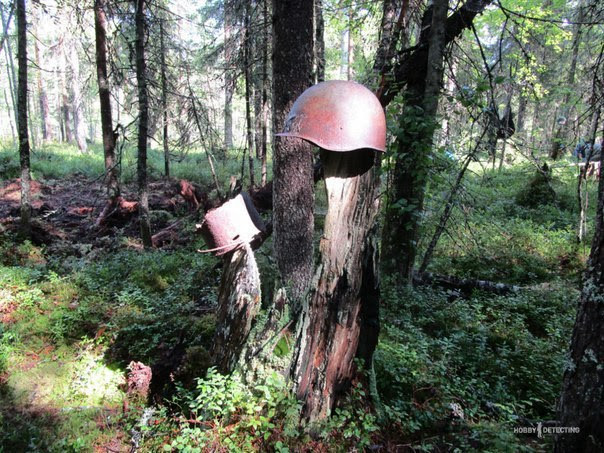
This is how they hang in the forest. Often, a helmet marks the location of the cop (for example, the height for which the battle was fought); in the thicket of the forest, such landmarks help. Here we see a Soviet helmet and next to it an ordinary bowler hat. 
Probably one of those finds that I will not find is the helmet of a Luftwaffe paratrooper. Great find in the area where these guys hang out. 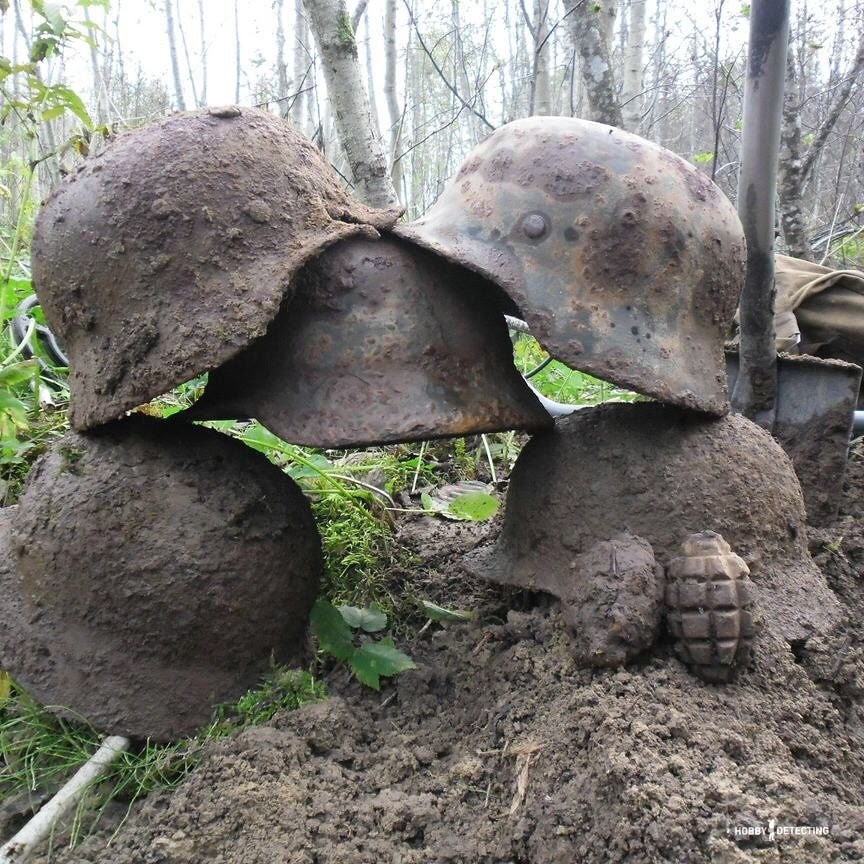
The consequences of the pit – helmets came out, and with them a grenade. 
As I wrote above, not only weapons or GPs were thrown into reservoirs, but also helmets. Don't be lazy to look under the water. 😉 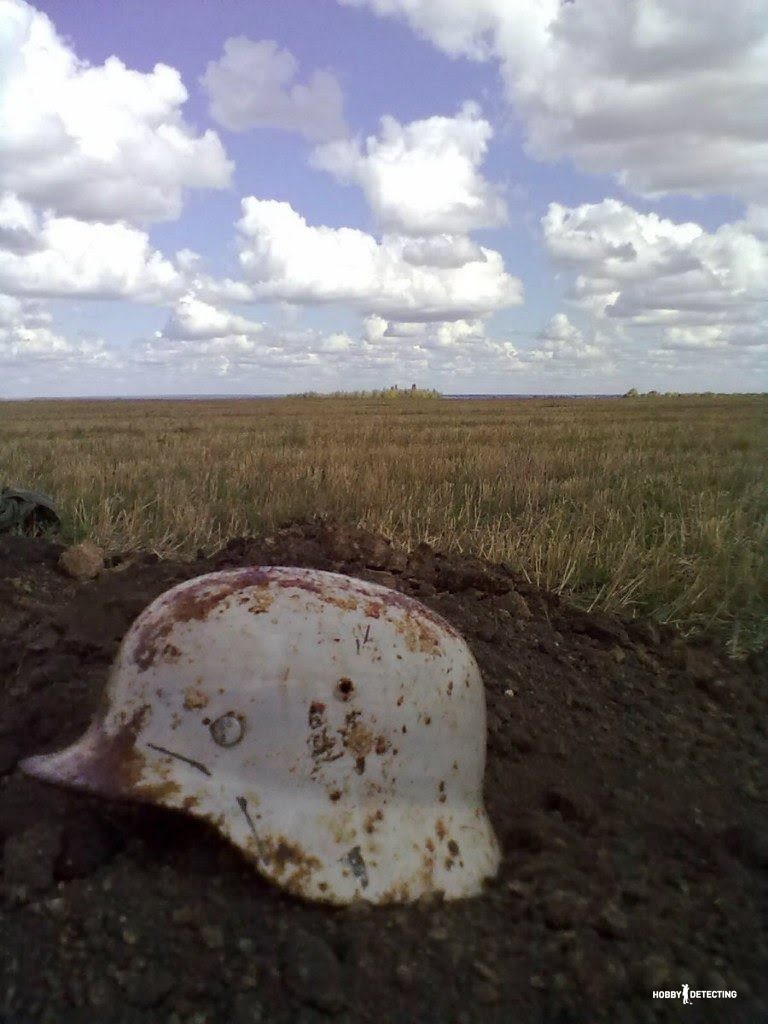
How can a German “cap” be valuable? Three factors: preservation, decals and original color. As you can see, it was definitely not the digger who painted this helmet in white camouflage color!
Shells and GPs
Do you think that once you come to the battle site, the finds will come out by themselves? Alas, no, most often you will find different shells, grenades and VOPs. You might even come across a 500 kg aerial bomb – things happen in life, but the digger never knows what lies under the coil and gives off a good colored signal. :)))) I ask those who are especially vigilant to leave the screen or switch to another post on my portal, of which there are many – very interesting and useful!

It all starts with very harmless cartridges – in packs, single, lost, and so on. Loading up a bag of ammo is common for an hour in most of these places. 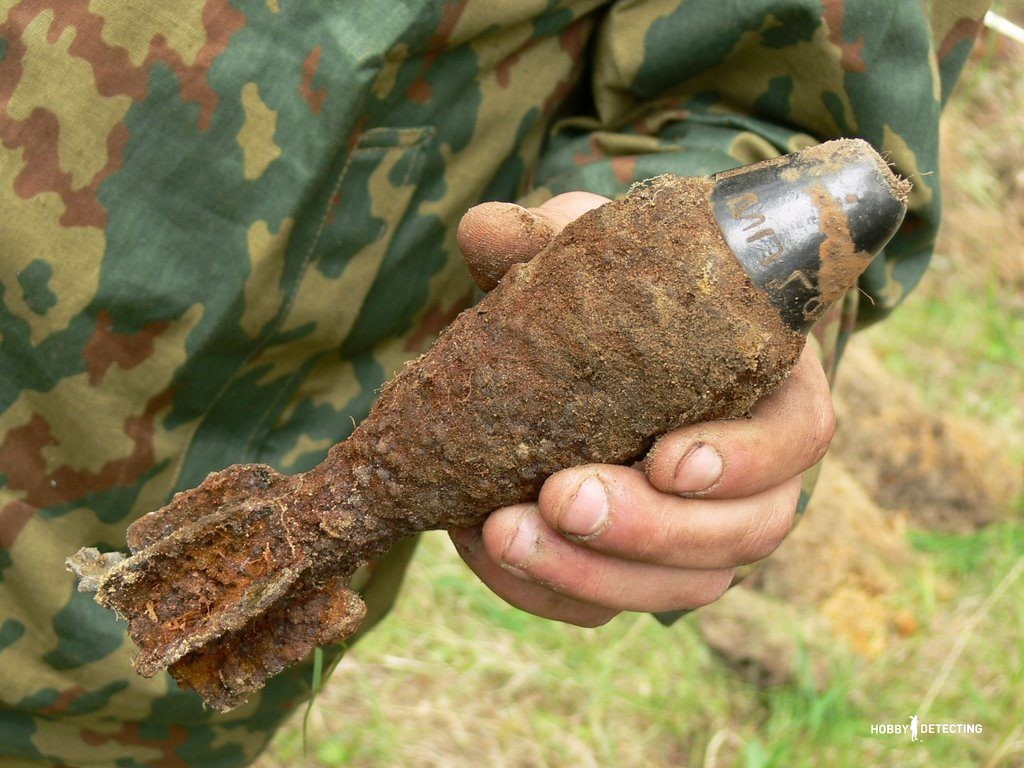
Then there are more dangerous things, these are mortar shells, for example. Who knows why this mine did not explode? Can you determine whether the mine was fired (passed through the mortar barrel) or whether someone in the crew forgot/lost it in the heat of battle? Don't forget about the particularly dangerous detonator on many mortar mines. 
Shells. There are a variety of them – howitzer, anti-tank and from a large number of artillery pieces that rumbled and shook the ground around during the war. Artillery preparation during an offensive could last for hours – which means a certain percentage of shells will go into the ground and not explode. And your metal detector will then return such a find with a good signal. 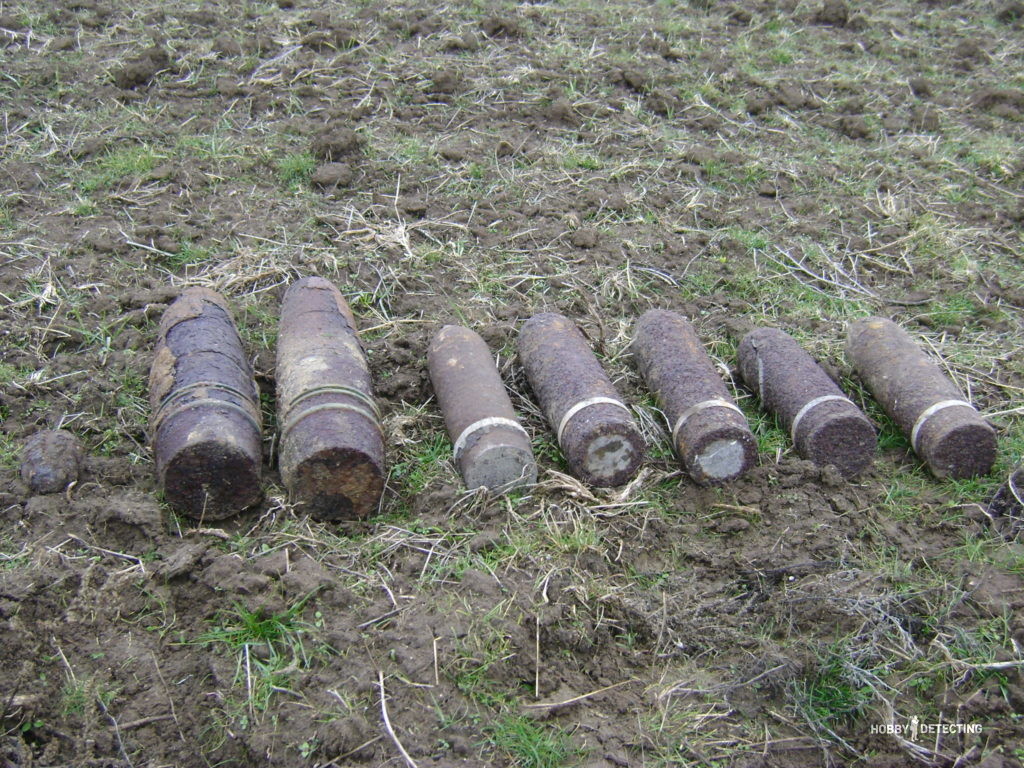
It’s better not to joke with such things and call professionals. Leave it in the forest and endanger mushroom pickers, hunters and random people.
 Those who need it know how to handle such things. It is strictly not recommended to climb and deal with this yourself.
Those who need it know how to handle such things. It is strictly not recommended to climb and deal with this yourself.
A short summary
Have you reached the end? Thank you for your interest and patience! 🙂
A war cop is both dangerous and interesting. Everyone does this for their own motives and reasons, but in the end I would like to urge everyone to simply follow simple rules:
- honor and respect for the fallen – everyone must return from the war, even after many decades
- We don’t scatter various finds and don’t bury shells under the intended site of a fire – we respect everyone who comes to the forest/swamp, or anywhere
- We don’t play around with GPs and may we have the long happiness of seeing our grandchildren and great-grandchildren 😉
And for those who follow the most minimal rules of a cop in war – these are such finds and in such quantities!
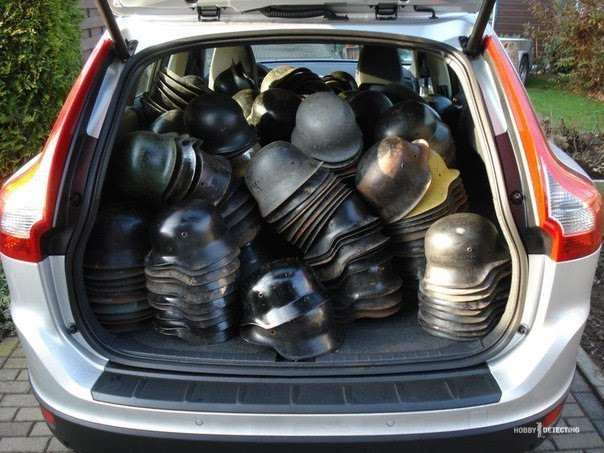 No worries, everyone!
No worries, everyone!
PS All photos are from the Internet, “the moped is not mine.”
What, did you like it? We have collected all the war research here , and cool finds can be found here ! Come in, look, study, oh young digger!
